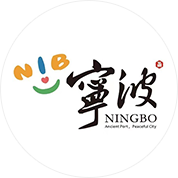Footprints of ancient humans were left in Zhejiang millions of years ago, laying the foundation for a rich cultural legacy. Through time and space, we listen to echoes of history and explore the marks of time buried beneath ancient relics and landscapes, hearing the resonance of millennia-old Zhejiang amid the prosperity of the present.
The Hemudu Site represents a major breakthrough in the archaeology of China's Neolithic Age. Its discovery provided conclusive evidence that both the Yangtze River and Yellow River basins were cradles of ancient Chinese civilization. But how was the Hemudu Site first discovered? Why did the early Hemudu people choose to settle there? How did they live? And what do the artifacts unearthed reveal about their spiritual beliefs?
The Hemudu Culture has left a profound mark on the prehistoric archaeology of both Zhejiang and greater China. Its discovery significantly reshaped our understanding of ancient Chinese civilization. The remarkable story begins fifty years ago.
In early summer 1973, in a remote village in eastern Yuyao, near the southern bank of the Hemudu ferry crossing on the Yao River, the construction of the Luojiang drainage station revealed the stunning remnants of a 7,000-year-old underground village. This archaeological discovery profoundly challenged the long-held belief in the "Yellow River-centric" view of Chinese history, opening a clear window into the Neolithic history of southern China.
During excavation, a large quantity of rice grains was found at the Hemudu site. These grains were bright yellow and well-preserved when unearthed and were identified as cultivated rice. Some clay pots even retained scorched rice at the bottom, with intact grains visible to the naked eye—evidence that rice was the staple food of the Hemudu people and that rice cultivation was a defining characteristic of their culture. As food is fundamental to life, the many discoveries related to rice farming at Hemudu made it a landmark in both Chinese and global agricultural history.
Before the Hemudu Site was uncovered, the archaeological community—focused on the millennia of dynastic change along the Yellow River from the Xia, Shang, and Zhou to the Sui and Tang—regarded that region as the heart of Chinese civilization. However, the astonishing discovery at Hemudu acted as a key, unlocking the hidden cultural richness of southern China and completely overturning the singular narrative of China’s origins. This ancient village along the Yangtze, with its rich cultural remains and advanced agricultural practices, showcased a prehistoric civilization as brilliant and sophisticated as that of the Yellow River basin.
Hemudu was situated with the scenic Siming Mountains behind and a plain dotted with lakes and rivers in front, blessed with stable natural resources. By 7,000 years ago, the Hemudu people had long moved beyond a primitive, survivalist lifestyle and were living in permanent settlements. Thus, "village" and "sedentism" are defining terms of this period.
In the second, third, and especially the fourth cultural layers of the site, remains of wooden architecture were found—over a thousand structures in total. These dwellings were constructed on elevated stilt foundations: rows of wooden piles supported beams and flooring, with columns, rafters, and roofs erected above. At the joints of these structures, mortise-and-tenon technology was used, pushing back the known origins of this advanced woodworking method by over 3,000 years from the metal ages to the Neolithic era.
With stable settlements, the daily life of the Hemudu people became increasingly enriched. Many artifacts unearthed from the site go beyond realistic depiction and reflect a profound spiritual world. They worshipped all aspects of nature. Many of the pottery, bone, and wooden objects are carved with animals, plants, and sun motifs—elements closely tied to their lives—and some objects are even shaped into the forms of the animals they revered. Birds and the sun appear most frequently and are rendered with great intricacy, highlighting the Hemudu people's spiritual reverence for these symbols.
After 1981, the Zhejiang Provincial Institute of Cultural Relics and Archaeology conducted further surveys on the Hemudu Culture’s distribution. Over 50 sites have since been identified. These are primarily located in the eastern part of the Ningbo-Shaoxing area on the southern shore of Hangzhou Bay, stretching eastward across the sea to the Zhoushan Islands and south to Luqiao District in Taizhou. This network of interconnected sites further affirms the long and continuous history of civilization in Zhejiang and substantiates that both the Yangtze and Yellow River basins were birthplaces of ancient Chinese culture.
In the fifty years since its discovery, the Hemudu Site has continued to shine a light on ancient civilization, illuminating our modern era. In 2024, the Hemudu National Archaeological Site Park was officially approved, marking a new phase in the protection, management, and transmission of Hemudu Culture. According to the plan, the park will be structured around “one axis, two corridors, and five core points.” A cultural interpretation axis will connect the park with the Hemudu Museum, while integrating with the Grand Canal Cultural Corridor and the Yao River waterfront landscape belt to form a comprehensive cultural framework and a multidimensional exhibition system. This beam of civilizational light from Hemudu will continue to illuminate humanity’s path, inspiring us to explore the unknown, carry forward cultural heritage, and innovate for the future.
Source: Zhejiang Federation of Humanities and Social Sciences
Editor: Ye Ke



